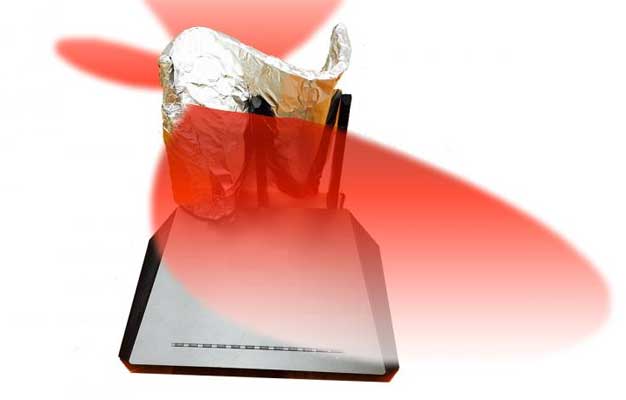Researchers Claim That Wrapping Your Router With A Tin Foil Hat Improves Wi-Fi Signals
Anyone around back in the '80s when rabbit ears were the main way of tuning in to your favorite shows will know that foil improved reception. A group of researchers has now found that we can apply similar tech to our WiFi routers. The team of researchers used a 3D printer to produce a cheap and customized reflector that directs wireless signals in the direction you need them most. The solution might be just what is needed for enhancing signal strength in certain areas of a home or office.

"Through this single solution, we address a number of challenges that plague wireless users," said Xia Zhou, an assistant professor of computer science at Dartmouth. "Not only do we strengthen wireless signals, we make those same signals more secure."
The 3D printed reflector shapes the wireless signal, improving the signal reception in desired areas. The same tech also makes it more difficult for attackers by adding to existing security measures by physically confining wireless signals to limited spaces. The team also says that this practice limits interference.
This new research is an improvement on previous research that placed an aluminum soft drink can behind the WiFi access point to strengthen the signal in one direction. The new research offers a systematic approach to optimizing the reflector shapes to enable a more developed signal distribution network. The team uses a "computationally optimized" signal reflector around the wireless router.
The reflector itself is composed of plastic with a thin layer of metal on it that redirects the signals to desired coverage areas. The team tested their reflector with several off the shelf wireless routers, including those using 802.11ac protocols.
"With a simple investment of about $35 and specifying coverage requirements, a wireless reflector can be custom-built to outperform antennae that cost thousands of dollars," said Zhou.
The computational system that the team developed was able to determine the optimized reflector shape in 23 minutes. The reflectors can decrease signal strength by up to 10 dB where a signal isn't wanted and increase it by 6 dB where it is desired. The next step in the research is to investigate reflectors that are able to change their shape automatically to change with interior layouts.

